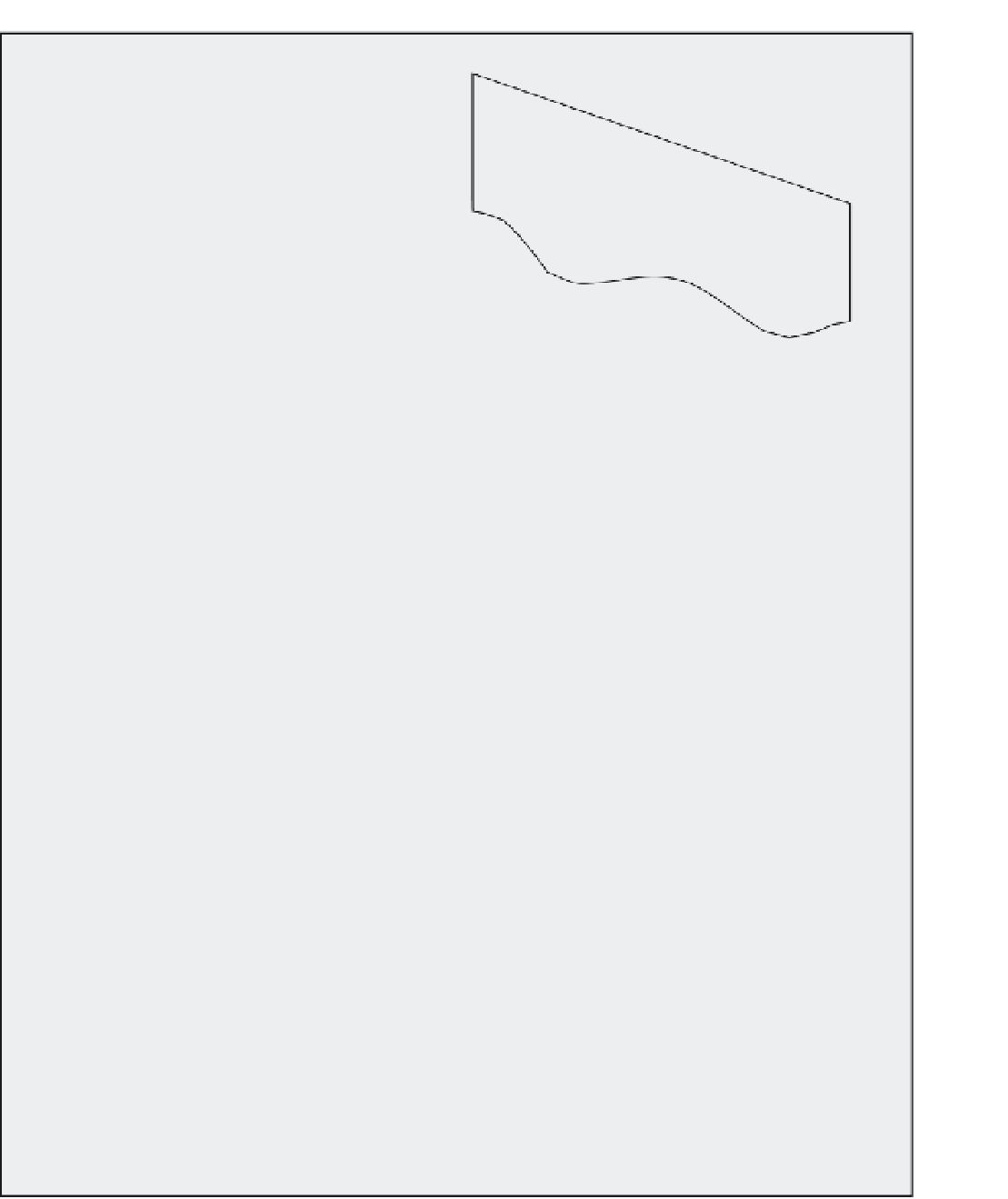Geoscience Reference
In-Depth Information
mm with an average of 156 rain days a year, and
stormflow makes up 65 per cent of the total
streamflow (Rowe
et al
., 1994; Pearce
et al
., 1986).
Mosley (1979, 1982) used Maimai to inves-
tigate the role of macropores as conduits for rapid
movement of rainfall to the stream. Observations
of macropore flow rates using cut soil faces and
dye tracers suggested that rainfall could travel
down the short steep hillslopes at Maimai in less
than 3 hours (i.e. within the time frame of a storm
event). Subsequent chemical and isotopic analysis
of streamflow, rainfall and water exiting the cut
soil pit faces showed that the majority of measured
streamflow was 'old' water, suggesting that rapid,
extensive macropore flow was not the main mecha-
nism for stormflow generation (Pearce
et al
., 1986).
McDonnell (1990) investigated this further, in
particular looking at possible groundwater ridg-
ing (Sklash and Farvolden, 1979) as a mechanism
for large amounts of old water as saturated over-
land flow. Although this could be observed at
Maimai, the amount of water held near the stream
prior to an event was not large enough to account
for all of the old water, which suggested that
another mechanism (e.g. piston flow) might be
working (McDonnell, 1990).
McGlynn
et al
. (2002) present a summary
conceptual diagram of runoff mechanisms on
Maimai hillslopes that combines many of the
features described above (see Figure 5.5). In this
model there is rapid infiltration of water through
macropores to reach the bedrock. At this stage a
form of piston flow occurs as the saturated zone at
the base of the soil mantle is confined by the soil
matrix above it. At the bedrock interface there
may be a network of macropores or else the same
situation of a confined aquifer in that the soil
matrix above has a much lower hydraulic con-
ductivity. Water is then pushed out at the bottom
due to the pressure from new water arriving
directly at the bedrock interface. There is also a
mixing of the new water with old water sitting in
bedrock hollows, creating a rapid movement of old
water into the stream during storm events.
New Water
Oldest Water
Pipeflow
old water
Figure 5.5
Summary hypothesis for hillslope
stormflow mechanisms at Maimai. Rapid movement
of water occurs through rapid infiltration to the
bedrock interface and then a form of piston flow
along this interface.
Source
: adapted from McGlynn
et al
. (2002)
How relevant are the Maimai
stormflow generation studies?
The studies that have taken place at Maimai have
been extremely important in influencing hydro-
logical thinking around the world. However,
an argument can be made that the conditions
at Maimai are far from generally applicable else-
where. The main study catchment (M8) has short,
steep slopes and is in an area of high, and fre-
quent, rainfall. The soils are extremely porous
(infiltration rates in excess of 1,600 mm/hour have
been measured) and remain within 10 per cent of
saturation for most of the year (Mosley, 1979).
These conditions are not common and it would
be difficult to generalise the concepts beyond
Maimai. One of the really important concepts that
Maimai has shown is that under conditions ideal
for stormflow generation the mechanisms are still
extremely complex and spatially variable. This
is true wherever in the world the study is taking
place.








